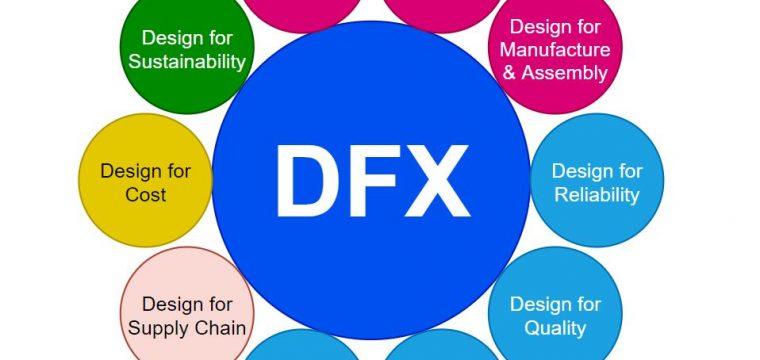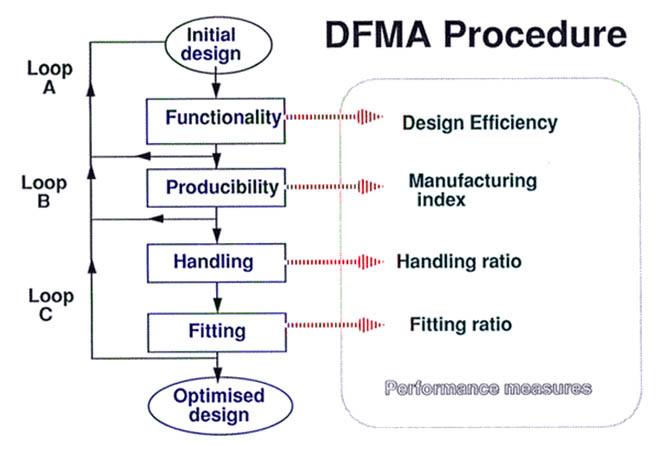In the world of manufacturing, the art of ensuring efficiency and cost-effectiveness in the production process is paramount. Design for Manufacture/Assembly (DFMA) is a method that focuses on streamlining and optimizing the design of a product to make it easier and more cost-effective to manufacture and assemble. However, the journey of a product does not end once it leaves the factory floor. The logistics, transport, and shipping of these products play a crucial role in getting them into the hands of the consumers. In this article, we explore the intersection of DFMA with logistics, transport, and shipping, and how these elements work together to ensure a smooth and efficient supply chain.
Key Concepts of Design for Manufacture/Assembly (DFMA) in Logistics
DFMA plays a crucial role in enhancing the efficiency of logistics, transport, and shipping processes. By designing products with ease of manufacturing and assembly in mind, companies can streamline their supply chain operations and reduce costs. Embracing the key concepts of DFMA in logistics not only leads to faster production cycles but also enables faster delivery times to customers.
Some essential principles of DFMA in logistics include:
- Minimizing part count: Reducing the number of components in a product can simplify both manufacturing and assembly processes.
- Standardizing parts: Using common parts across different products can improve efficiency and reduce inventory costs.
- Designing for automation: Creating products that are easy to automate production can lead to faster and more consistent manufacturing results.

Strategies for Optimizing Transport Efficiency in DFMA Processes
One key strategy for optimizing transport efficiency in DFMA processes is to carefully consider the packaging of components and products. By designing packaging that is compact, lightweight, and durable, companies can reduce shipping costs and minimize the risk of damage during transit. Utilizing reusable packaging materials can also help to decrease waste and improve sustainability efforts. Additionally, implementing automated packaging solutions can streamline the packing process and improve overall efficiency.
Another effective strategy is to leverage technology to improve supply chain visibility and streamline transportation logistics. By utilizing real-time tracking systems, companies can more effectively monitor the movement of goods and identify potential bottlenecks or delays in the transportation process. Implementing route optimization software can also help to reduce transportation costs by identifying the most efficient delivery routes and modes of transportation. By embracing technology and data-driven solutions, companies can enhance their transport efficiency and ultimately improve overall DFMA processes.
| Strategy | Benefit |
|---|---|
| Compact packaging design | Reduce shipping costs and minimize damage |
| Automated packaging solutions | Streamline packing process and improve efficiency |
| Real-time tracking systems | Improve supply chain visibility and monitor goods movement |
| Route optimization software | Reduce transportation costs and identify efficient delivery routes |

Maximizing Cost Savings Through Streamlined Shipping Methods
Shipping methods play a crucial role in maximizing cost savings for businesses. By implementing efficient and streamlined shipping processes, companies can reduce expenses and improve their bottom line. One way to achieve this is through the use of Design for Manufacture/Assembly (DFMA) principles in logistics.
DFMA focuses on designing products that are easy to manufacture and assemble, which can also be applied to shipping processes. By designing products with shipping in mind, businesses can minimize packaging materials, reduce transportation costs, and optimize storage space. This approach can lead to significant cost savings while ensuring products reach their destination in a timely and cost-effective manner.

Integration of DFMA Principles into Supply Chain Management Systems
When it comes to integrating DFMA principles into supply chain management systems, one crucial aspect to consider is the logistics of transporting and shipping products. By designing for manufacture and assembly with logistics in mind, companies can streamline their processes and reduce costs. This involves optimizing packaging, minimizing part counts, and designing for easy handling and transportation.
Implementing DFMA principles in logistics can lead to various benefits such as improved efficiency, reduced lead times, and decreased shipping expenses. Companies can also enhance their sustainability efforts by minimizing packaging materials and reducing carbon emissions during transportation. By focusing on DFMA in logistics, businesses can create a more seamless supply chain that delivers products to customers faster and more cost-effectively.
In Retrospect
In conclusion, the principles of Design for Manufacture/Assembly (DFMA) extend beyond the production floor and into the realms of logistics, transport, and shipping. By incorporating DFMA strategies into these critical areas, companies can streamline their operations, reduce costs, and improve efficiency. From optimizing packaging designs to maximizing container space utilization, DFMA offers endless possibilities for innovation and improvement. By embracing this holistic approach, businesses can truly unlock their full potential and drive success in today’s competitive global marketplace. So, let DFMA be your guiding light on the journey towards a more efficient and sustainable future in logistics, transport, and shipping.
